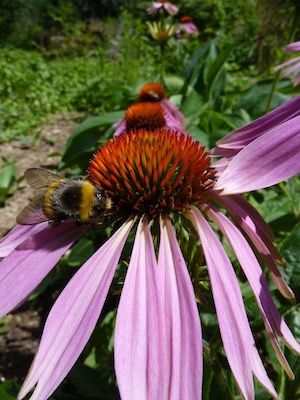Echinacea
I- Nomenclature
Latin name: Echinacea
Family : Compositae
Common names: Eastern purple coneflower, Purple Coneflower, Hedgehog coneflower
Etymology
Echinacea' is derived from Greek, meaning ‘spiny one’, in reference to the spiny sea urchins 'εχίνοι'. 'Purpurea' means 'reddish-purple'.
II- Legends and traditions
Legends and traditions
Echinacea was one of the main medicinal plants of the indigenous peoples of North America, particularly the Cheyennes and Sioux, who used the juice or porridge from the crushed grass or pieces of chewed root.
III- Botanical description
Description:
Perennial herbaceous plant of 80 cm with purple-brown stems, covered with a rough down, straight, solid and resistant.
The basal leaves are alternate, petiolate rough, dark green, acuminate and lanceolate. The upper leaves almost sessile with a rough surface.
The flowers form large flower heads with purple-pink ligulate flowers whose frutescent orange-brown cone contains prickly thorns.
The fruits are achenes topped with a silky crest of hairs.
The roots are fibrous with dark bark streaked with longitudinal scars
Habitat: Native to the plains of North America
Harvest: Picking in the wild is done in the fall. The roots are cleaned, dried and then stored in dry places.
Pars used: Roots
IV- Active ingredients
|
Roots |
|
• Heteroside • Bitter principles • Tannins |
V- Therapeutic uses
Properties
|
Roots |
|
• Antibacterial • antiviral • immunistimulant • vulnerary |
Indications
Upper respiratory tract infection
Feverish or cold snap
Administration mode
Mother tincture
VI- Precaution of use
Contraindication
Pregnant women
nursing women
young children
in case of transplant, cancer, autoimmune diseases, multiple sclerosis, polyarthritis, kidney problems, AIDS or tuberculosis: seek the advice of your doctor if taking medication.
Interaction: none known
Caution: It is recommended not to exceed 8 weeks of treatment



